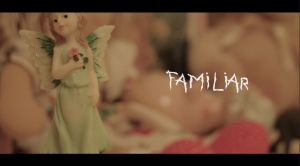Most recent representation question: http://hijackersandconverts.com/a2-g325-june-2013/
http://www.youtube.com/watch?v=oZXqORn0z4E
Representation refers to the construction in any form (especially the mass media) of aspects of ‘reality’, such as people, places, objects, cultural identities and other abstract concepts. This may be through speech, writing or in moving images. The easiest way to understand the concept is to remember that when watching something on TV or film, that things aren’t the same as they would be in real life. All media products re-present the real world to us as an audience, they show us what we think reality looks like rather what it actually looks like.
The main representations we study in the media are:
- Masculinity
- Femininity
- Social Class
- Sexuality
- Race and Ethnicity
- National Identity
- Age
I won’t be needing to write about all of these in relation to my short film, however representations of age, masculinity, femininity and family relations will almost certainly apply to my storyline. Below are a few screenshots from ‘Familiar’, that I may mention in my exam answer, and talk about how they represent characters, stereotypes, tones or ideas. I will be able to talk about costume, colours, symbolism and connotations in order to explain how I have made my audience perceive the film and storyline.
Representation was particularly important in my film in order to convey to the audience that the man in the young girl’s room wasn’t meant to be there. If I would have dressed him in jeans and a wooly jumper, my audience may have thought that he was the girl’s father. They would have interpreted the film in a completely different way and I would have been unable to convey the story that I wanted to.
When talking about this in the exam, there are a number of theories that I will be referring to that will help to back up my answer. These include:
Richard Dyer
Richard Dyer’s theory of representation is that everything has a representation behind it. Everything seen in media texts can be interpreted by the audience in a different way. I can talk about this in relation to my film because there is symbolism and aspects of the film which represent certain things and allow the audience to understand the story.
Levi Strauss
This theory states that when consuming texts, audiences think in binary opposites, good and evil for example. When watching films they want to categorise symbols and characters etc. because this is how people make sense of the world. I can talk about this in relation to the two characters in my film who are binary opposites, good and evil, child and adult.
Tessa Perkins
Tessa Perkins’ theory of stereotypes states that they are not always negative, but there is some truth behind them. I can use the theory of stereotypes when talking about my characters because the audience empathised with the protagonist because she was good and innocent, a common stereotype of a young girl.
Laura Mulvey – Male gaze
Vladimir Propp – Spheres of action, characters can be put into one of 8 categories (Hero, villain, princess, father of princess, false hero, helper, donor, dispatcher)
Stuart Hall – Dominant, oppositional and negotiated – How much the audience accepts the codes given to them through the text or disputes
Useful sites:
- media.edusites.co.uk/article/representation-theory-simplified
- mediaknowall.com/as_alevel/alevel.php
- mediaalevel.edublogs.org/representations/
- slideshare.net/tomaskas/media-representation-theory








